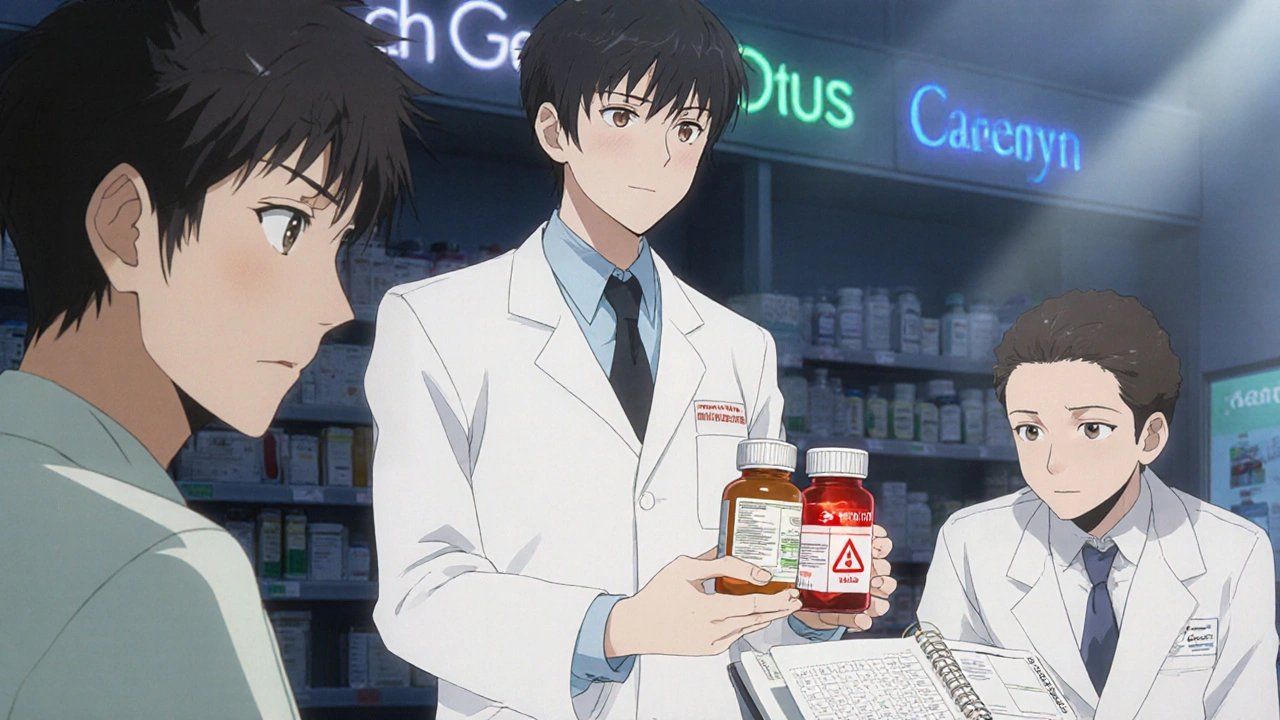Generic Drug Safety: What You Need to Know About Quality, Side Effects, and Trust
When you pick up a generic drug, a medication that contains the same active ingredient as a brand-name drug but is sold under its chemical name. Also known as generic medication, it works the same way, costs less, and is held to the same standards—when it’s legal and properly made. But not all generics are created equal. You’ve probably heard stories: one person swears by their generic version of metformin, another says it gave them stomach cramps that the brand-name didn’t. What’s really going on?
The truth is, generic drug safety isn’t just about the active ingredient. It’s about fillers, coatings, absorption rates, and how the body reacts to tiny differences in how the pill breaks down. The FDA requires generics to be bioequivalent—meaning they deliver the same amount of medicine into your bloodstream as the brand. But that doesn’t mean every generic from every manufacturer behaves exactly the same in every person. For most people, it’s fine. For some—especially those on narrow-therapeutic-index drugs like warfarin, thyroid meds, or seizure medications—switching brands can cause real problems. That’s why doctors sometimes ask you to stick with one generic maker, or even the brand.
And then there’s the supply chain. Many generic pills are made overseas, sometimes in factories with poor oversight. The FDA inspects foreign plants, but not as often as U.S. ones. A 2023 report found over 1,200 warning letters issued to international generic drug makers for data falsification, unsanitary conditions, or skipping quality tests. You don’t need to panic, but you do need to know: if your generic suddenly stops working or starts causing new side effects, it might not be you—it might be the batch.
That’s where drug quality, the consistency and purity of a medication’s ingredients and manufacturing process comes in. It’s not just the FDA’s job—you can check the manufacturer’s name on the bottle and look up recalls. Some pharmacies even let you choose which generic brand they dispense. And if you’re on a long-term medication, ask your pharmacist if your generic has changed. A switch might be silent, but your body might notice.
Side effects from generics aren’t usually from the active drug—they’re from inactive ingredients. Dyes, preservatives, or fillers like lactose or gluten can trigger reactions in sensitive people. If you’ve had a rash, bloating, or weird fatigue after switching to a cheaper version, it’s worth tracking. Write down what you took, when you switched, and what happened. That info can save you from a bad reaction next time.
And don’t forget FDA approval, the official process that ensures a generic drug meets safety, strength, and quality standards before it hits the market. Just because a pill is cheap doesn’t mean it’s approved. Online pharmacies selling unapproved generics are a huge problem. They might sell fake, expired, or contaminated drugs disguised as real meds. Always get your generics from a licensed pharmacy—preferably one you trust.
What you’ll find in the posts below are real-world stories and science-backed tips about how generic drugs behave in your body. From how amiloride works in combination therapy to why some people react to vilazodone’s fillers, these aren’t theoretical debates—they’re lived experiences. You’ll see how inhaler technique affects delivery, how anticholinergic burden builds up over time, and why switching insulin brands can trigger allergic reactions. This isn’t about fear. It’s about awareness. You have the right to safe, effective medication—no matter the price tag.

Identifying Problem Generics: When Pharmacists Should Flag Issues
Pharmacists play a critical role in catching unsafe generic drug substitutions. Learn when to flag issues with NTI drugs, look-alike names, and faulty extended-release formulations to protect patient safety.

Side Effects After Switching to Generics: When to Worry
Switching to generic medications can cause side effects for some people, especially with drugs like thyroid medicine, epilepsy treatments, and blood thinners. Learn which medications are risky, why changes happen, and how to protect yourself.
